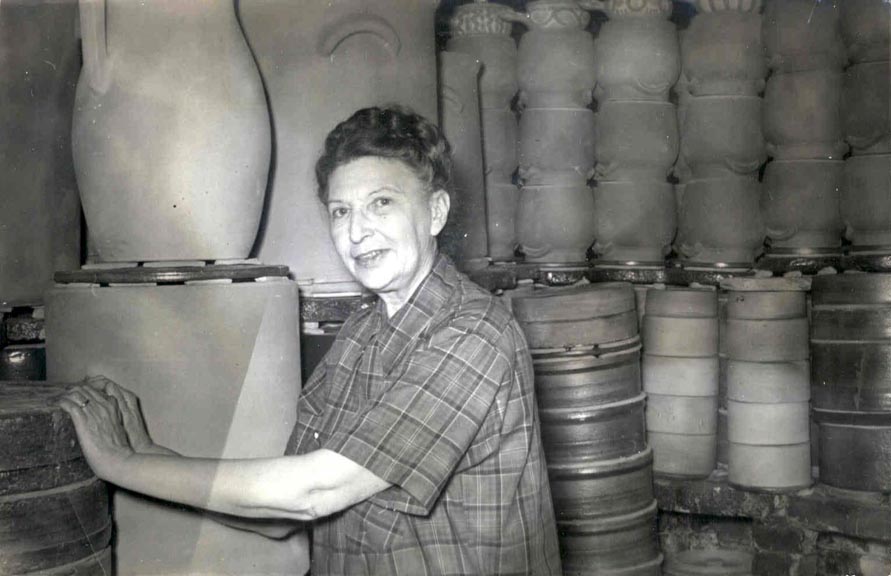Dorchester Illustration no. 2450 Dorchester Pottery Kiln
Since the Dorchester Historical Society’s buildings are closed, we hope to share the Society’s collections in other ways including this space.
We have a slide show that you can view by copying and pasting this link into your browser.
Today’s illustration shows Ethel Henderson with unfired pieces inside the kiln. The round flat-topped containers held small pieces so that the heat would reach them more gradually and evenly.
The following is from the National Register description of the kiln.
The Dorchester Pottery Works kiln and the brick building that houses it is a designated Boston Landmark. The kiln, which has an interior that is 22 feet in diameter and 10 1/2 feet high, sits in the center of the brick building with about 10 feet between it and the outside walls. The second floor of the building has a round opening in the center as large as the kiln below, making it more of a balcony around the room than a real floor. The kiln building sits lower in the landscape than the wooden building to its side, and there is a staircase of 6 to 8 steps down from the first floor of the other building to the floor of the kiln building. Today’s photo seems to have been taken from the top of the staircase looking down and across the room.
The kiln measures, in its dimensions, approximately 30 feet in diameter and about 12 feet in height from grade to the top of the dome. At grade, the kiln’s walls are approximately 4 feet thick and include an encasing wall about 4 feet and 9 inches in height. This outer wall houses nine firing holes and the arched entry to the kiln’s interior. The exterior walls of the kiln are girded with horizontal and vertical iron bands to allow for the proper structural expansion and contraction of the kiln during firing and cooling.
Inside, the kiln measures approximately 22 feet in diameter. The interior space is about 10 1/2 feet high under the center of the dome, marked by the location of a small air hole, and about 6 1/2 feet high near the kiln’s sides.
Brick shelving lines the inner walls of the kiln which are covered with a shiny surface formed over the years, through the escaping of vaporized glazes during firing. A grid of heat resistant tiles on the kiln’s floor permits the conduction of heat, fire, and gases through an underground flu to the chimney which protrudes out of a corner of the building.
The following is from “Dorchester Pottery” by Richard V. Simpson in Antiques & Collecting, January, 1994.
Henderson constructed a kiln of his own design in 1914, and this kiln is preserved today in the building on Victory Road. It is a beehive-shaped kiln with an interior diameter of 22 feet and interior height of 10 ½ feet that allowed two to three freight carloads of pottery to be fired at one time. At time of its construction, it was the largest down-draft kiln in the country.
The following is from “Pottery Aids Defense” in Boston Traveler, June 30, 1941.
A down-draft turns the floor into a chimney, and the smoke and heat are drawn down through a channel under the floor to the tall vent stack at the outside edge of the building.

